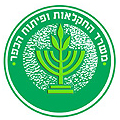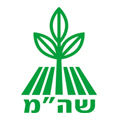Hairy stork’s-bill (Erodium crassifolium) (HSB) is one of the few Geraniaceae species that produce tubers. While HSB tubers were occasionally used as a food source by desert nomads, they have not yet been taken up in the modern kitchen. Recently, HSB tubers were recognized as harboring potential to become an industrial pharmaceutical crop. The objective of this study was to determine a set of agricultural practices that would maximize the yield of the bioactive compounds of the present HSB genetic material. A generous and consistent irrigation regime of about 700 mm season−1 increased tuber yield and size. The optimal plant density on sandy soils was 16–20 plants m−2 . Mineral nutrition, applied through fertigation, increased tuber yield from 0.6 to almost 1 kg m−2 . Source-sink manipulations (consistent pruning of the reproductive organs) almost doubled the tuber yield. During 10 years of research, the adopted agricultural practices increased yield by an order of magnitude (from about 0.2–2.0 kg m−2 ) without any dilution of the bioactive compounds. Nevertheless, further research and development are required to achieve HSB potential as an industrial field crop, including selection and breeding of outstanding infertile clones, optimization of fertigation, and development of various concrete pharmaceutical products.
Keywords: arid land; Erodium crassifolium; medicinal crops; mineral nutrition; source-sink relations; underutilized species; plant domestication
Agronomy 2021, 11, 1715. https://doi.org/10.3390/ agronomy11091715 Link to article open source:
https://www.mdpi.com/2073-4395/11/9/1715








